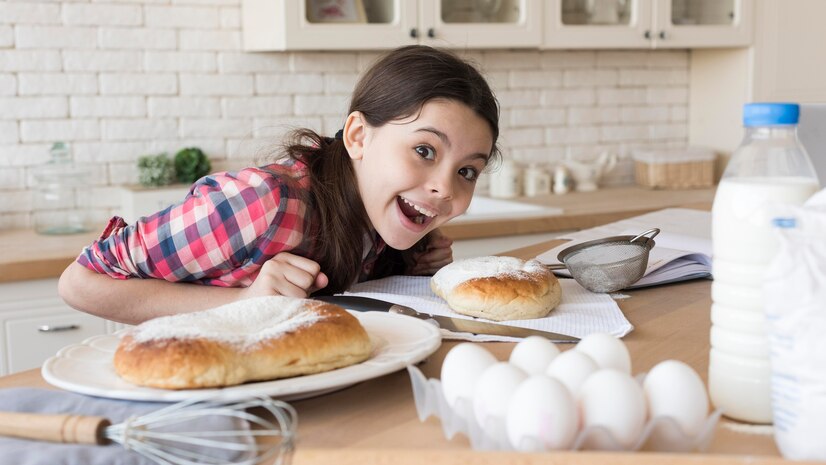Bread making is both an art and a science, a delightful blend of technique and creativity. With a rich history dating back thousands of years, bread has been a staple across cultures, yet its recent resurgence in home baking is giving it a fresh twist. Whether you’re a seasoned baker or a curious beginner, mastering the art of bread making can transform flour, water, and yeast into a masterpiece. This guide is here to unveil the secrets to creating the perfect loaf, one step at a time.
The Science Behind Great Bread
Understanding the science of bread making is crucial for achieving consistently delicious results. At its core, bread is composed of four main ingredients: flour, water, yeast, and salt. Each plays a vital role in the chemistry of bread making. Flour provides the structure, water activates the gluten, yeast acts as a leavening agent, and salt adds flavor and strengthens the dough.
Temperature and humidity are significant players in the bread-making process. Yeast is sensitive to temperature, thriving around 95°F (35°C). Too cold, and the yeast will be sluggish; too hot, and it may die. Humidity affects the dough’s hydration, influencing the texture and rise of the bread. A hygrometer can help you monitor these conditions for optimal results.
To achieve the perfect balance, consider your kitchen’s environment. If it’s too dry, the dough will need more water; if too humid, less. Adjusting these variables will help you create a loaf that is fluffy on the inside with a perfectly crisp crust.
Tips for Consistent Results
Consistency is key in bread making. One of the most effective ways to achieve this is by measuring ingredients accurately. Use a digital scale for precision, as even slight variations can affect the dough’s consistency and final texture. Understanding baker’s percentages can also aid in adjusting recipes to your liking, providing a framework for experimentation.
Kneading is another critical step. This process develops gluten, giving bread its structure and chewy texture. Techniques vary; some prefer the gentle stretch-and-fold method, while others opt for the more vigorous slap-and-fold. Whichever you choose, aim for a smooth, elastic dough that springs back when poked.
Proofing, or allowing the dough to rise, is where the magic happens. Proper proofing enhances flavor and texture. A slow, cold proof in the refrigerator overnight can add depth and complexity to your bread, while a warm, rapid rise creates a lighter, more delicate crumb.

The Role of Time in Bread Making
Time is an invaluable ingredient in bread making, particularly during fermentation. This process occurs when yeast consumes sugars, producing carbon dioxide and alcohol, which help the dough rise and develop flavor. Longer fermentation results in a more complex taste profile and improved texture.
When planning your baking schedule, remember that patience is essential. Rushing any stage can lead to dense, flavorless bread. Instead, allow the dough to rest and rise at its own pace, monitoring its progress rather than adhering strictly to the clock.
Autolysis, a pre-fermentation rest, can also enhance your dough. By mixing only flour and water and letting it sit for 20-60 minutes before adding yeast and salt, you allow enzymes to break down proteins, resulting in a more extensible dough.
Troubleshooting Common Bread Making Mistakes
Even experienced bakers encounter issues from time to time. Dense bread is often a result of insufficient kneading or proofing. To remedy this, try extending kneading time or allowing the dough more time to rise. Overproofing, on the other hand, can cause bread to collapse. Check the dough regularly during its rise, and use the poke test to determine readiness.
Underbaking is another common pitfall. Bread should have a golden-brown crust and sound hollow when tapped on the bottom. Investing in an oven thermometer can ensure accurate temperatures, while a kitchen timer will help prevent overbaking.
If your bread lacks flavor, consider tweaking fermentation times or experimenting with different flours and yeasts. Sometimes, a simple adjustment can transform a mediocre loaf into a bakery-quality delight.
Enhancing Flavor and Texture
Once you’ve mastered the basics, it’s time to get creative with flavors and textures. Adding seeds, nuts, dried fruits, or herbs can elevate your bread and create unique taste combinations. Be mindful of moisture levels when incorporating extras; for example, soaking dried fruits beforehand can prevent them from drawing water from the dough.
For a deeper flavor profile, try using a preferment, like a poolish or biga. These are mixtures of flour, water, and a small amount of yeast, allowed to ferment before being added to the final dough. The result is a more complex flavor and improved texture.
Experiment with different techniques to achieve your desired crumb. A higher hydration dough can yield an open, airy crumb, while a lower hydration results in a denser, chewier texture. Play around with these variables until you find what suits your palate and preferences.
Conclusion
Bread making is a rewarding craft, blending the precision of science with the freedom of artistry. By understanding the fundamentals, experimenting with techniques, and adapting to your environment, you can create consistently delicious loaves that reflect your personal taste. The joy of crafting the perfect bread lies in the process as much as the result, offering endless opportunities for growth and discovery.







































